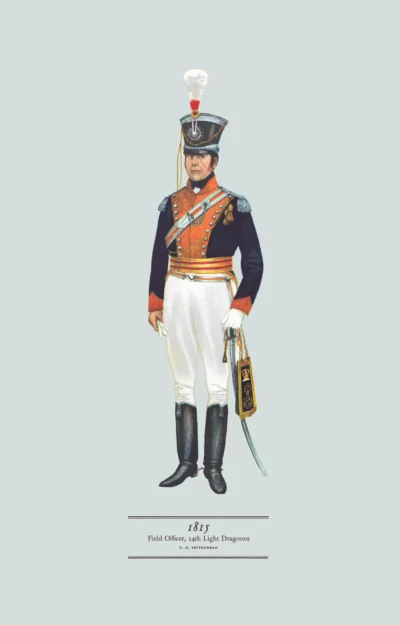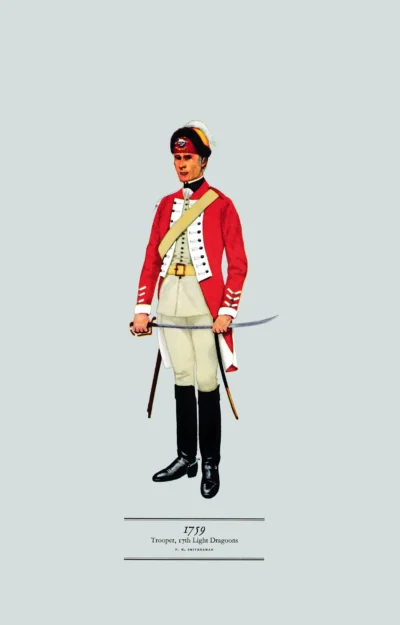Captain, 9th Queen’s Royal Lancers, 1939
£12.00
Raised 1715; from 1921 9th Queen’s Royal Lancers; from 2015 Royal Lancers – RL (scroll down for a more detailed Description)
Published 1962 by © Hugh Evelyn Limited; drawn by Colonel Philip Henry Smitherman (1910-1982), Royal Corps of Signals
Size: c. 24 x 37cm [9 ½ ″ x 14 ½ ″] (may vary slightly from printers’ cut 50 years ago)
Printed on on medium cardstock weighing 144 g/sm2 faced in light greyish blue (RGB c. d5dede)
Print is STANDARD size – shipping is the same for 1 to 10 prints (based on largest print size in your order) – see Shipping & Returns
In stock
Description
The 9th was raised in 1697 and, like so many cavalry regiments, disbanded almost at once, and then raised again in 1715 with the title Wynne’s Dragoons. It became the Light Dragoons in 1788, and Lancers in 1816 but was amalgamated with the 12th Royal Lancers to form the 9th/12th Royal Lancers in 1960 and finally, in 2015, to the Royal Lancers. William IV made it the Queen’s Royal Lancers in honour of Queen Adelaide, whose cypher still appears on their buttons. It was at Delhi during the Mutiny, and its punishment of the rebels earned them the name of the ‘Delhi Spearmen’. This is the final form of Lancer dress after the Crimea. The gold bullion epaulettes have gone and the coatee replaced by a tunic. The schapka has been cut down in size, and was not only less expensive to buy, but more easily retained on the head when mounted. After the Crimean War, the swan’s feather plumes were replaced by horsetail in some regiments (not including the 9th) but by 1914 swan’s feathers were back. The cords passing across the front of the tunic from the right shoulder are the cap lines, and like the Hussars, Lancers had their shoulder belts ornamented with ‘pickers’. The cuff underneath the gauntlet was edged with a gold chevron, or two gold chevrons for field officers, the cuff being of the regimental facing colour. Most regiments had the upper part of the schapka in the colour of their facings, but the 9th had blue cloth and a patent leather top.
Additional information
| Weight | 0.0123 kg |
|---|---|
| Dimensions | 23 × 37 cm |





